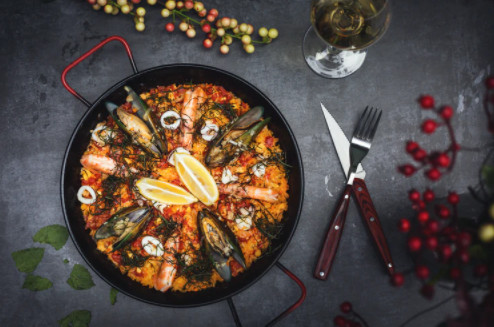Seafood Watch- Environmentally Sound SeafoodThe seafood buying decisions we make as individuals have
Seafood Watch- Environmentally Sound SeafoodThe seafood buying decisions we make as individuals have a profound effect on the health of ocean wildlife. The Monterey Bay Aquarium is working to educate consumers about this critical conservation issue.In October of 1999, the Aquarium launched “Seafood Watch” in response to its growing concern that consumer demand for seafood was seriously damaging the health of ocean ecosystems and ocean wildlife populations.“Fisheries conservation is among the most important marine conservation issues today, ” said aquarium executive director Julie Packard. “It’s an environmental problem whose solution is in people’s hands every time they buy seafood. Through ‘Seafood Watch’ we want to give people the information they need to make wise choices when they shop.”Increased consumer demand for seafood combined with destructive fishing practices have had a disastrous effect on the health of the oceans. Today, 11 of the world’s 15 most important fishing areas - and nearly 70 percent of the world’s fisheries - are either fully fished or over fished. An estimated 30 million tons of fish, sharks and seabird die each year as “wasted catch” - animals caught accidentally and discarded, dead or dying.Fish farming or aquaculture has its own set of problems including pollution, spread of disease to wild populations and the destructive conversion of coastal wetlands into commercial fish farms.“Seafood Watch” offer detailed information about why seafood earned either a “Best Choices” rating, a “Proceed with Caution” alert or a place on the “Avoid” list.Consumers can find more detailed and up to date information on Seafood Watch by visiting the Monterey Bay Aquarium’s website, or by picking up a handy pocket guide at Whole Foods Markets in California and Washington.For your convenience here are the Monterey Bay Aquarium’s current Seafood Watch Recommendations:BEST CHOICESPacific Albacore/Tombo TunaPacific Calamari/SquidFarmed Catfish Farmed Clams from the US., Canada and New ZealandDungeness CrabHalibut from AlaskaMahi-mahi/Dolphin Fish/DoradoFarmed Mussels from the US., Canada and New ZealandNew Zealand Cod/HokiFarmed Oysters from the US., Canada and New ZealandFarmed Rainbow TroutWild-Caught Salmon from California or AlaskaFarmed Striped BassFarmed Sturgeon Farmed TilapiaPROCEED WITH CAUTIONAmerican LobsterBay ScallopsBay Shrimp/Pacific Pink ShrimpEnglish/Petrale SoleHalibut from California, Oregon or WashingtonImitation Crab/Surimi/PollockWild Caught Salmon from Oregon or WashingtonSnow Crab Spot Prawns (trap caught are OK)Turtle Safe® Shrimp/PrawnsYellowfin Tuna/AhiAVOIDBluefin TunaChilean Seabass/Patagonian ToothfishAtlantic CodLingcodMonkfishOrange RoughyRockfish/Pacific Red Snapper/Rock CodSablefish/Butterfish/Black CodFarmed SalmonAtlantic Sea ScallopsSharkWild or Farmed Shrimp/PrawnsTrawl Caught Spot Prawns Swordfish -- source link
Tumblr Blog : photos-elsoar.tumblr.com
#seafood
